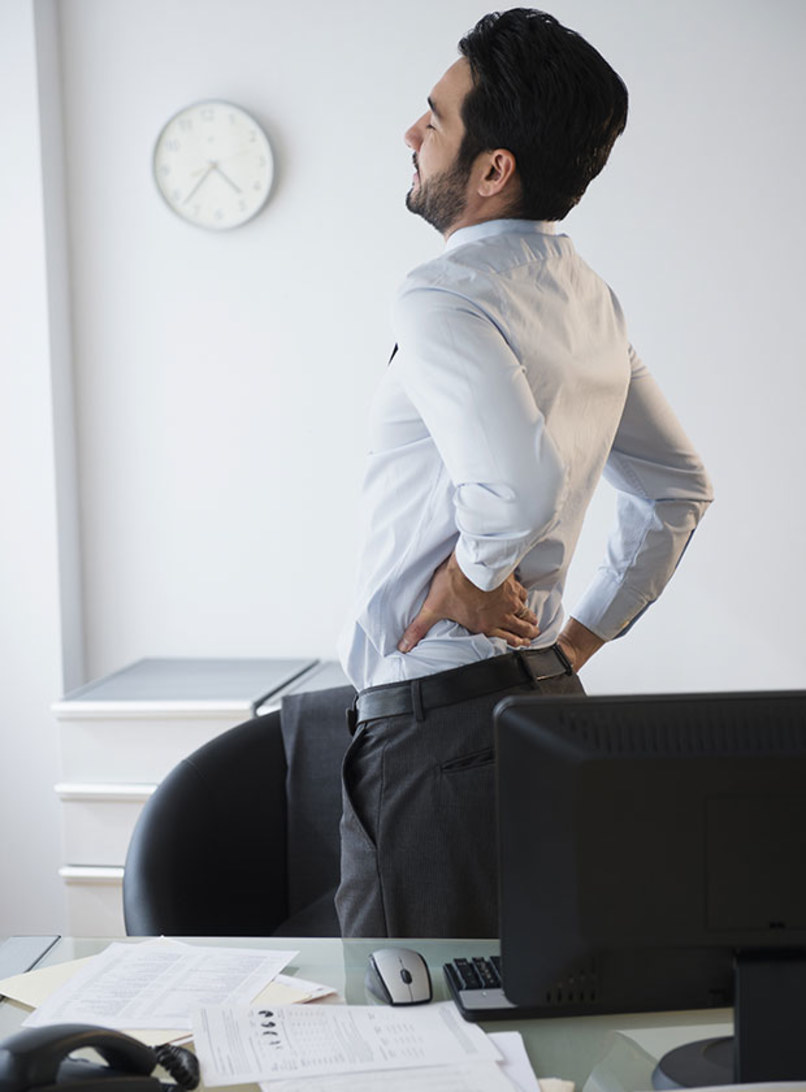
Stretching at work does more than prevent an aching neck and cramped behind. It can also make you way more productive at whatever it is you should be doing at your desk.
In fact, in one Journal of Occupational and Environmental Medicine study, when employees blew off work for 2 and a half hours each work to move and stretch around the office, they actually got more done than those workers who spent that time glued to their desks.
“Sitting for long hours staring at a screen eventually leads to decreased focus and distraction,” says physical therapist Jared Beckstrand, P.T., D.P.T., founder of Tone and Tighten. “Stretching, loosening tight muscles, and getting blood flowing throughout your body can help to reset your mental focus so you can come back strong to get the job done.”
Whip out these stretches the next time a headache, 3pm slump, or butt cramp strikes:
Ear-to-Shoulder Stretch
The best thing about this stretch isn’t the fact that it can eliminate tension in the sides of the next and tops of your shoulders. It’s that the move is so inconspicuous, you can do it all throughout the day without anyone thinking anything of it, Beckstrand says.
Instructions: Sit up tall and drop your left ear straight over toward your left shoulder until you feel a stretch in the right side of your neck. For a deeper stretch, use your left hand to gently press your head closer to your shoulder. Hold for 20 seconds and then repeat on the opposite side.
Hip Tilts
When you sit in a desk chair, you keep your hips tilted forward, putting pressure on your low back and causing pain. This stretch takes your pelvic girdle through its full range of motion to increase mobility, keep your hips from locking up, and preventing back pain, says Christopher Harrison, creator of AntiGravity Fitness.
Instructions: Sit tall with your hands on your knees, stick your belly out, and pull your navel down toward floor, forcing the hips to tilt forward and the low spine to arch. Then, relaxing your hands, rock over your sit bones so that your navel moves toward your back and your low back forms a concave position. Keep rocking back and forth.
Doorway Stretch
This stretch can help correct your posture and get your shoulders, head, and back in alignment after a long day hunched over the computer screen, Beckstrand says.
Instructions: Stand tall in a doorway with one hand on each side of the doorjamb. Then, while keeping your hands in place, step into the doorway until you feel a stretch throughout the front of your chest and shoulders. Try to keep your head up (the tendency is to look down during this one). Hold 20 seconds.
Ear-to-Armpit Stretch
Jutting your head forward throughout the day can increase tension in the muscles of the back of your neck, which connect to your skull and can contribute to mind-numbing headaches, Beckstrand says. This stretch can help.
Instructions: Sit up tall and bend your head down and over toward your armpit. Then, with your left hand, apply gentle pressure to the back of your head. You should feel a comfortable pull through the back of your neck on the right side. Hold 20 seconds and then repeat on the opposite side.
Wall Slide
It might not look like much, but this little stretch goes a long way toward loosening tight shoulders and reducing neck pain, he says.
Instructions: Stand tall with your back against a wall. Your hips, shoulder blades, and back of your head should all be touching the wall. Place the back of your hands against the wall at ear level. Maintaining contact with the wall, slide your hands up the wall and over your head. Slowly return to starting position. Repeat as necessary.
Spinal Twists
Simple twists simultaneously stretch and strengthen the muscles in your back and spine, both relieving pain and preventing it before it starts, Harrison says.
Instructions: Sit tall in your chair and cross your right leg over your left leg, one knee on top of the other. Reach your left arm over your right knee. Twist your chest to the right and reach your right arm behind your chair. Look over your right shoulder. Pause, then repeat on the opposite side.